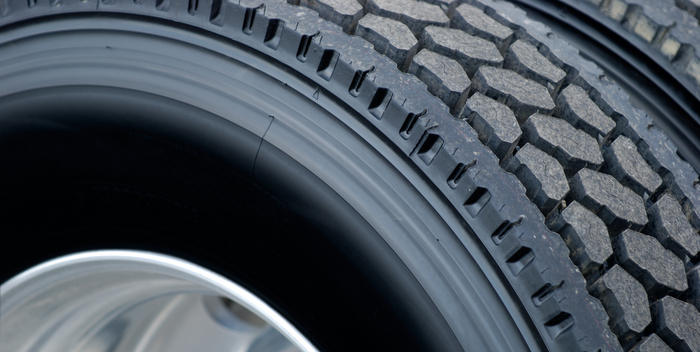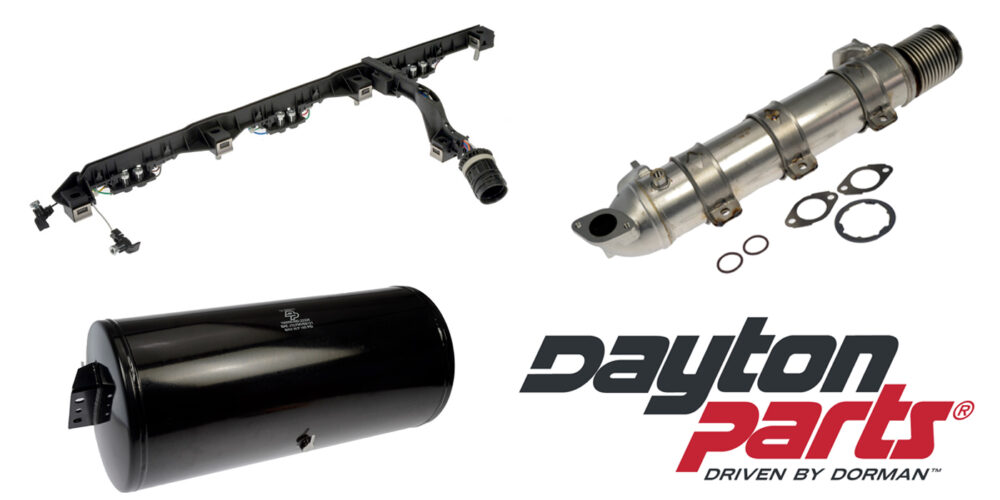The best way to maximize tire removal miles is to keep tires properly inflated to the recommended pressure specification for your specific vehicle loads and speeds. Tires that are running smoothly and evenly with no signs of irregular wear at the correct pressure—that’s the winning recipe to increase tire removal mileages. If irregular tread wear develops, tires will be removed prematurely from service and cost per mile increases dramatically.
Let’s take a closer look at the more common irregular wear conditions and what can be done to reduce these issues. Irregular wear conditions vary depending on the specific wheel position: steer, drive or trailer.
Steer tires can see a wide range of irregular wear conditions:
- Shoulder step/chamfer wear;
- Full shoulder wear;
- One-sided wear;
- Feather wear;
- Cupping/wavy wear;
- Depressed rib wear;
- Alignment wear (toe-in or toe-out).
Shoulder step is a common phenomenon found in slow wearing steer tires running in linehaul operation. This is usually confined to the outer portion of the shoulder rib. Treadwear is even in the center of the tread, but then there is a step or drop-off in the outer portion of the shoulder. This is typical of steer tires running in linehaul operation and will not be an issue affecting mileage.
Vehicles that are misaligned can cause many steer tire irregular wear conditions such as full shoulder wear, one-sided wear, and feather wear.
Full shoulder wear is a result of side scrubbing and caused by improper toe condition on the steer axle or drive/trailer axle misalignment. The steer axle might be in perfect alignment, but problems can still occur thanks to either the drive or trailer axle being misaligned. When the outside shoulders of both steer tires are worn, too much toe-in is the culprit. When the inside shoulders of both steer tires are worn, the steer axle has a toe-out condition. If the drive axle is misaligned and the steer axle is in spec, the result is that one steer tire has inside shoulder wear, while the other steer tire has outside shoulder wear.
Feather wear occurs on steer tires when tread ribs are worn high to low on each rib across the tread. Excessive toe on the steer axle and/or drive axle misalignment is usually the cause. Cupping/wavy wear results when the tire-wheel has moderate to severe assembly out of balance. Running tires underinflated will also lead to this condition.
Drive tire wear conditions include:
- Shoulder wear one shoulder;
- Shoulder wear both shoulders;
- Heel-toe wear;
- Alternate lug wear;
- Brake skid.
Rapid shoulder wear on only one drive shoulder is most commonly due to negative camber and uneven inflation pressure between the inside and outside duals. Tire pressures between duals should be no greater than five PSI. When both shoulders have rapid wear, running light loads can be the cause because the tire footprint is not allowing the shoulders to be in full contact with the road surface.
Heel-toe wear occurs when each lug around the tire is worn high to low from the front to the back edge. This condition occurs when the duals have mismatched inflation pressures. It will also occur if the dual tires have different overall diameters. Alternate lug wear is another drive tire condition caused by mismatched dual tires. Brake skids, which can be found on both drive and trailer tires, are usually the result of aggressive use of brakes.
Trailer tire conditions include:
- Brake skid;
- Diagonal wear;
- Shoulder wear;
- Erratic depressed wear.
Diagonal wear describes localized flat spots worn diagonally across the tread and often repeats around the tread circumference. It many cases this is initiated by a moderate brake skid. It can also be due to toe-out and mismatched duals. Shoulder wear on one shoulder can be due to excessive camber or improper bearing adjustment. Light loads and running high speeds can lead to rapid wear on both trailer tire shoulders.













